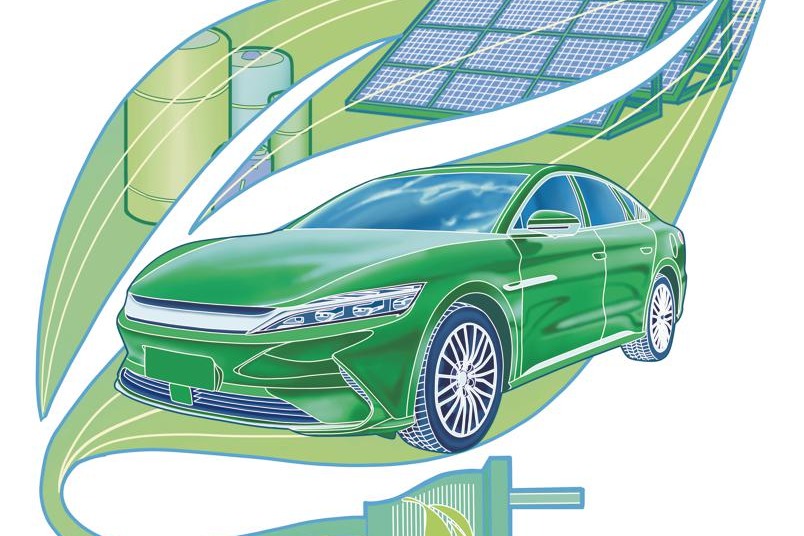China keeping each step firmly to the moon


The moon, planet Earth's only natural satellite and our closest celestial body, beckons us from 380,000 kilometers away to explore the vast expanse of the cosmos. Since ancient times, humans have dreamt of exploring space, with the moon serving as their first stop. Indeed, the moon is the first step toward uncovering the unknown — exploring the secrets of the limitless universe.
China launched three astronauts into low-Earth orbit on Thursday night for a six-month mission at the Tiangong space station, as part of its preparations to send astronauts to the moon by 2030.
The journey to realize our primal dream began in earnest in 1959 with the launch of the first scientific lunar exploration. From then till 1976, the United States and the Soviet Union engaged in a frenzied lunar race, sending 83 lunar probes into orbit, marking what historians later dubbed as the "First Lunar Rush".
While the initial surge in lunar exploration may have been driven by political, military and technological competition, the later expeditions were spurred by the true allure of space exploration. Beyond the tantalizing prospects of helium-3, a future energy source hidden in the lunar regolith, lie five types of minerals not found on Earth. That aside, the moon is also believed to have reserves of rare metals that complement those on Earth, with lunar mare basalt alone containing at least 100 trillion tons of extractable titanium metal.
In the 21st century, several countries have proposed "returning to the moon" as part of their exploration. But to date, only China has systematically pursued it through its Chang'e program. From 2007 to 2020, China completed the lunar exploration phase with Chang'e 1 through five missions, culminating in the historic landing of the Chang'e 4 rover and lander on the far side of the moon in 2019.
China's lunar exploration road map till now can be divided into reconnaissance, landing and establishment. Having achieved unmanned exploration, China's next horizon is manned lunar landing. After achieving that, China's goal is to prepare for short-term habitation, conduct lunar surface research, and carry out exploration and mining.
The upcoming Chang'e 6 mission represents the first task of a new phase of the Chang'e program. Originally intended as a backup for Chang'e 5, the program is intended to fulfill a new mission: bringing back soil samples from the far side of the moon. The Chang'e 6 and subsequent missions will survey the lunar topography, land forms and material composition, and make preparations for future manned landings and establishment of lunar bases. Not surprisingly, China's manned lunar exploration program now has a detailed timetable, with the target set for 2030.
The return to the moon has become a focal point for space-faring countries this year. In April NASA announced plans to send equipment to the moon for long-term scientific exploration. And SpaceX and Blue Origin, as providers of manned landing systems, have been making progress in developing lunar landers for large cargo.
In fact, NASA-led Artemis program includes the space launch system rocket, ground exploration equipment, Orion spacecraft, manned landing systems, next-generation spacesuits, rovers and the "Gateway" lunar space station.
The moon, described poetically in ancient Chinese literature as a "jade plate", is once again poised to play a grand role in humankind's quest for excellence — the establishment of a manned lunar base, paving the way for future manned missions to Mars.
However, the long-term exploration of the moon and construction of lunar research stations require substantial resources, including energy, and material support. At the current level of technology, the cost of transporting 1 kilogram of materials from Earth to the moon ranges from $50,000 to $90,000. This means, if the construction and operation of lunar research stations were to rely solely on Earth's supplies, it would entail enormous costs.
This is where the lunar soil brought back by Chang'e 5 comes in. It has opened new avenues for scientists, some of whom believe it is possible to build bases using the resources available on the moon. According to Chinese scientists' research, some components of the lunar regolith can serve as catalysts for four processes: photovoltaic electrolysis of water, photocatalytic water decomposition, photocatalytic reduction of carbon dioxide and photo-thermal catalytic hydrogenation of carbon dioxide. Simulated solar radiation will help these processes to convert water and carbon dioxide into oxygen, hydrogen, methane and methanol. While oxygen is vital to human survival, hydrogen and methane are essential components of rocket propellants, and methanol is a key chemical raw material.
As German philosopher Immanuel Kant said, "Two things fill the mind with ever new and increasing wonder and awe — the starry heavens above me, and the moral law within me."
The moon serves as humanity's first stop and transit on way to the cosmos, and China is determined to keep each step firmly on the way.
The author is vice-president of Aerospace Knowledge Magazine. The views don't necessarily reflect those of China Daily.
If you have a specific expertise, or would like to share your thought about our stories, then send us your writings at opinion@chinadaily.com.cn, and comment@chinadaily.com.cn.


































